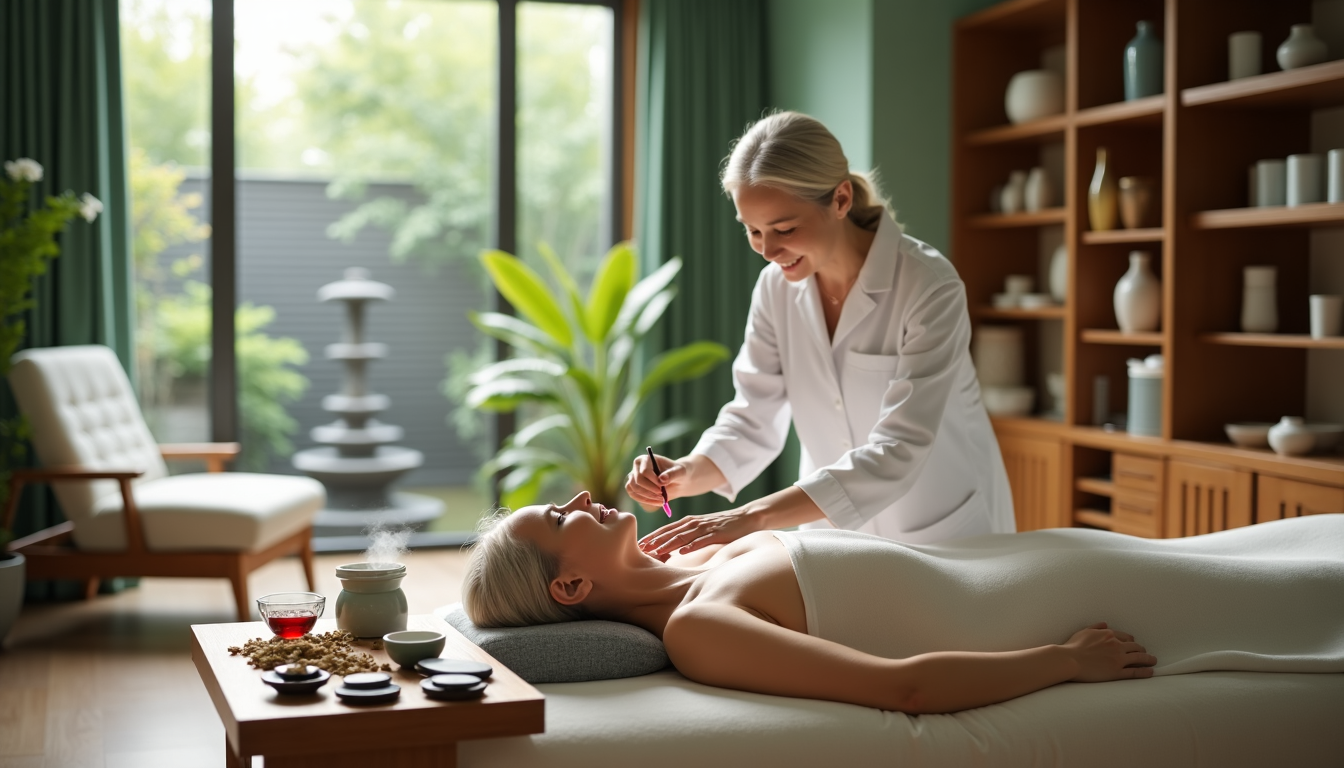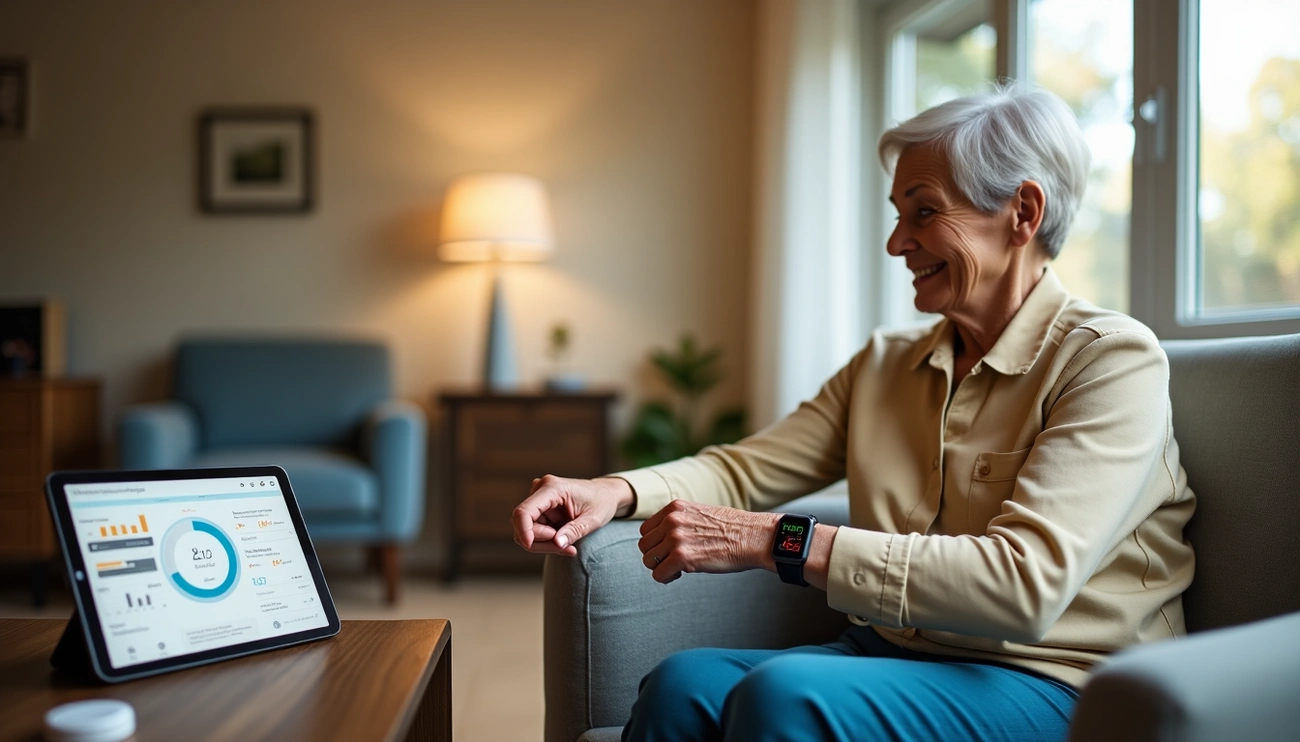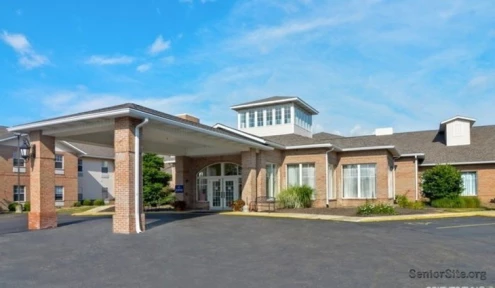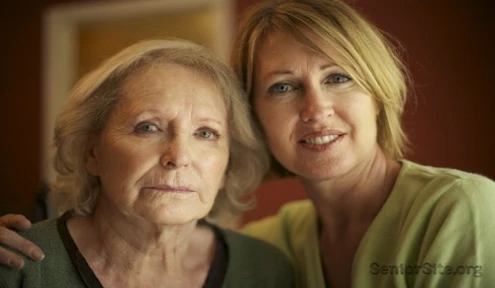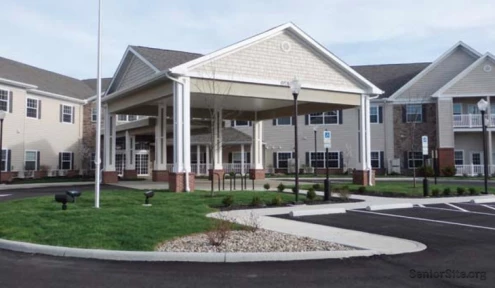Nearly 88% of older Americans now use alternative medicine as part of their healthcare routine, making it a significant trend in senior wellness. Most seniors turn to these treatments for specific reasons—54.8% seek pain relief, while 45.2% hope for improved quality of life.
Chiropractic care leads the list of preferred complementary treatments at 61.9% usage among seniors, with herbal medicine following closely at 54.8%. These therapies show promising results for many older adults. However, they also come with important safety considerations and effectiveness questions that seniors must understand before starting treatment.
This article examines the benefits, risks, and practical aspects of alternative therapies for older adults. The information provided helps seniors make informed decisions about these treatments while keeping safety and well-being as the primary focus.
What is Alternative Medicine for Seniors?
Alternative medicine encompasses a diverse group of healing approaches that exist outside mainstream healthcare systems. For seniors, these treatments provide additional options beyond conventional medicine to address age-related health concerns.
Understanding complementary and alternative medicine (CAM)
Complementary and alternative medicine (CAM) covers various therapies and practices not typically considered part of conventional medical care. No universally accepted definition exists, but CAM is generally understood as health-related practices outside mainstream medicine.
The National Institutes of Health (NIH) has developed a framework to categorize these approaches. The NIH National Center for Complementary and Integrative Health (NCCIH) classifies CAM into three primary domains:
- Natural products – including herbs, vitamins, and dietary supplements
- Mind and body practices – such as meditation, yoga, acupuncture, and massage
- Other complementary health approaches – including traditional healing systems
The Cochrane Collaboration uses a similar system with four categories: Mind-Body medicine, Natural Product-based Therapies, Energy Medicine, and Whole Medical Systems.
Studies show CAM usage rates among older adults range from 31% to 88% depending on the population studied. A 2012 national survey found more than 30% of adults and about 12% of children use health approaches outside conventional medicine.
For seniors specifically, chiropractic care leads at 61.9% usage, followed by herbal medicine at 54.8%, massage therapy at 35.7%, and acupuncture at 33.3%. Pain relief motivates 54.8% of seniors toward these treatments, while 45.2% seek improved quality of life, and 40.5% aim to maintain health and fitness.
Alternative therapies encompass physical and psychological approaches guided by qualified practitioners. Common examples include art therapy, music therapy, mindfulness meditation, tai chi, and yoga. These approaches can supplement conventional healthcare or sometimes stand alone.
How CAM differs from conventional treatments
The distinction between complementary and alternative approaches lies in how they’re used alongside conventional medicine:
- Complementary medicine refers to non-mainstream practices used together with conventional medicine as a supplement to standard care
- Alternative medicine refers to non-mainstream practices used instead of conventional medicine as a replacement
Most people who use non-mainstream approaches continue using conventional healthcare. Recent estimates suggest 70% to 90% of CAM users combine these therapies with conventional medicine. This combined approach is sometimes called “integrative medicine” or “integrative health,” bringing conventional and complementary approaches together in a coordinated way.
Philosophical differences separate these approaches. Conventional medicine typically defines health as the absence of disease and bases practices on rigorous scientific evidence. It often focuses on specific symptoms or body systems in isolation.
CAM tends to define health holistically, viewing it as a balance of physical, emotional, and spiritual systems. These approaches generally treat disharmony among these systems as the root cause of illness rather than just addressing individual symptoms. CAM practices often rely on evidence-informed approaches that may not meet the strictest scientific criteria.
The effectiveness of alternative therapies varies considerably. Many CAM treatments show mixed results—working for some conditions while lacking evidence for others. Concerns about side effects from conventional drugs have led many seniors to explore CAM options.
Importantly, CAM should not replace necessary conventional medical treatments, especially for serious conditions. The greatest health risk with CAM occurs when unproven therapies substitute for proven conventional medicine in life-threatening disorders.
For seniors considering CAM, communication with healthcare providers remains essential. Unfortunately, studies show physicians are not consistently informed about patients’ CAM use, potentially leading to dangerous drug-herb interactions, particularly for older adults taking multiple medications.
Why More Seniors Are Turning to Alternative Therapies
The growing trend toward holistic health approaches among older adults reflects a significant shift in senior healthcare preferences. A study from Ohio State University found approximately 71% of older adults used some form of alternative medicine in 2000. This substantial adoption rate points to compelling reasons behind seniors’ move toward these practices.
Desire for natural and holistic care
Seniors increasingly seek healthcare approaches that treat the whole person rather than merely addressing isolated symptoms. This holistic perspective—considering physical, emotional, and spiritual well-being simultaneously—resonates with many older adults facing complex health challenges.
Holistic health treatments identify ways to treat illnesses while simultaneously promoting overall wellness. These approaches examine how illness affects a person’s entire life and address comprehensive needs rather than focusing solely on managing symptoms. Many seniors find this whole-person perspective offers a refreshing alternative to the sometimes fragmented nature of conventional care.
Older adults with chronic conditions or poor health status show particular interest in alternative approaches. Among those who described their health as poor, 65% reported using some form of alternative medicine they considered preventive or curative—a higher percentage than any other group. This suggests seniors actively seek complementary options when conventional treatments fail to provide adequate relief.
Assisted living communities have noticed this preference. Many now prioritize holistic care focusing on the social, emotional, physical, and spiritual well-being of their residents. This institutional adoption further legitimizes seniors’ exploration of alternative health pathways.
Concerns about side effects of conventional drugs
Drug-related problems represent perhaps the most compelling reason driving seniors toward alternative therapies. Adverse drug effects occur at a rate of about 50 events per 1000 person-years among ambulatory people aged 65 and older.
Hospitalization rates due to adverse drug effects are four times higher in older patients (approximately 17%) than in younger patients (4%). This stark difference highlights seniors’ unique vulnerability with conventional pharmacological treatments.
Several age-related factors contribute to this increased susceptibility:
- Changes in the liver and kidneys that affect how drugs are metabolized and eliminated
- Greater sensitivity to medication effects
- Complex medication regimens (polypharmacy)
- Age-related changes in body composition (increased fat, decreased water content)
Many seniors turn to alternative medicine because these approaches typically involve less invasive interventions with fewer side effects. For older adults on fixed incomes, financial considerations provide additional motivation—alternative medicine often costs less than conventional treatments, helping seniors avoid recurring doctor visits and expensive prescription medications.
The appeal grows even stronger considering that 66% of hospitalizations in older patients due to adverse drug effects stem from just four drug classes: warfarin, insulin, oral antiplatelet drugs, and oral hypoglycemic drugs. Numerous medications independently increase fall risk in seniors, including sedative hypnotics, antihypertensives, and antiarrhythmics.
Physicians sometimes prescribe additional medications to treat the side effects of other drugs, creating a problematic “prescribing cascade” that exposes patients to continuing risks from both the original medication and the newly prescribed drug. Against this backdrop, alternative therapies offering fewer side effects become increasingly attractive to seniors seeking safer treatment options.
Despite these compelling motivations, seniors should not discontinue prescribed medications without medical supervision. The ideal approach, as many experts suggest, integrates conventional and complementary treatments under professional guidance.
Benefits of Alternative Medicine in Senior Health
Evidence continues to mount for the measurable health benefits that alternative medicine provides to seniors. From reducing chronic pain to promoting restful sleep and emotional balance, research supports many of these treatments as effective complements to conventional care.
Pain relief and improved mobility
Chronic pain affects up to 85% of seniors in skilled nursing facilities and 50% of older adults living independently. Several alternative therapies show effectiveness in addressing this common condition.
Acupuncture stands out as an effective treatment for various pain conditions. The National Institutes of Health recognizes acupuncture as beneficial for back pain, neck pain, osteoarthritis-related knee pain, tension headaches, and fibromyalgia. One large review of multiple studies found acupuncture more effective than either no treatment or sham acupuncture for back and neck pain.
Chiropractic care shows similar promise, with research confirming its effectiveness for chronic back pain, neck pain, and headaches. Approximately 62% of seniors who use alternative medicine choose chiropractic care, making it the most popular option.
Mind-body practices also offer significant pain relief:
- Yoga helps with chronic low-back pain in both short-term (1-6 months) and intermediate-term (6-12 months) periods
- Tai chi, either alone or combined with physical therapy, can decrease pain intensity and improve everyday function for people with back pain
- Mindfulness meditation demonstrates effectiveness for back pain of less than six months’ duration
Massage therapy helps with short-term pain relief, though evidence for long-term management of low-back pain remains limited. For many seniors, even temporary relief significantly improves quality of life.
Better sleep and reduced anxiety
Poor sleep quality affects millions of Americans, with seniors particularly vulnerable to sleep disruptions. Several alternative approaches show promise for improving sleep.
Melatonin supplements can be particularly helpful for seniors, as our bodies produce less of this sleep-regulating hormone with age. For older adults, doses of 0.5 to 5 mg taken about an hour before bedtime can improve sleep quality.
Research shows that taking a 200 mg chamomile extract capsule once daily for 28 days significantly improves sleep quality in the elderly. Valerian root (400-900 mg) taken up to 2 hours before bedtime has proven helpful for insomnia.
For anxiety reduction, mindfulness-based practices may be as effective as established treatments for managing anxiety symptoms. Music therapy reduces anxiety, especially during medical procedures. These approaches avoid the side effects associated with anti-anxiety medications.
Enhanced emotional well-being
One of the most significant yet often overlooked benefits of alternative medicine is its positive impact on emotional health and overall quality of life.
Music therapy and art therapy significantly reduce feelings of loneliness and depression while enhancing life satisfaction and improving mood in seniors. Music therapy has proven effective for treating depression.
Mind-body therapies like meditation, yoga, and tai chi show promising results in reducing symptoms of depression, anxiety, and cognitive decline in older adults. These practices promote relaxation, mindfulness, and improved emotional well-being, allowing seniors to better manage stress.
Almost three-quarters of complementary and alternative medicine users report improved overall health and feeling better after using these approaches. Half of users specifically report reduced stress and improved relaxation.
For many seniors, the sense of control over their health may be the most valuable emotional benefit. CAM can empower midlife and older adults to support their own health, motivate them to pursue other healthy behaviors, and help them manage stress. This empowerment contributes to a positive health trajectory into older age.
Risks and Safety Concerns to Be Aware Of
While alternative treatments offer numerous benefits, seniors must recognize potential risks that come alongside them. Safety concerns exist with many complementary treatments—understanding these risks is essential for making informed healthcare decisions.
Herb-drug interactions and toxicity
Herb-drug interactions represent a substantial concern for seniors who often take multiple medications. Approximately one in three concurrent users of herbs and prescription drugs faces potential interactions. Among the most problematic herbs are flaxseed, evening primrose oil, St. John’s wort, hawthorn, and ginkgo.
St. John’s wort presents a particularly significant hazard as it affects CYP3A4, an enzyme involved in metabolizing approximately 80% of prescribed medications. Common supplements like glucosamine, cod liver oil, omega-3 fish oil, and calcium can also interact with prescription drugs.
The magnitude of interaction risk is concerning yet often underrecognized. Just over half of herb-drug combinations have “no interaction” or “no interaction of clinical significance,” leaving many combinations potentially hazardous. Among identified interactions, seven were assessed as having potential for hazardous outcomes, primarily involving increased blood glucose concentrations, heightened bleeding risk, or reduced medication efficacy.
For seniors taking cardiovascular medications, this risk cannot be ignored. Common drugs with narrow therapeutic windows—anticoagulants like warfarin, insulin, antiplatelet drugs, and oral hypoglycemics—account for 66% of hospitalizations in older adults due to adverse effects.
Physical risks from acupuncture or chiropractic care
Physical treatments carry their own specific risks. With acupuncture, common side effects include soreness, minor bleeding, and bruising at insertion sites. More serious complications, though rare, can include infections if unsterilized needles are used. In extremely rare cases, pneumothorax (collapsed lung) may occur if needles penetrate too deeply in the chest.
Studies have documented various adverse events from acupuncture including syncope (7.04% of systematic reviews), pain (11.79%), bleeding or bruising (9.83%), and hematoma (5.73%). The majority of these adverse reactions relate to electroacupuncture, manual acupuncture, and acupoint catgut embedding techniques.
For chiropractic treatments, safety concerns primarily involve spinal manipulation. Approximately half of patients report mild adverse events after spinal manipulation therapy, typically including muscle soreness or stiffness lasting 24-72 hours. Serious complications from chiropractic care are extremely rare, with practitioners typically modifying techniques for elderly patients by substituting lower-force for higher-force procedures.
Importance of professional supervision
Professional supervision emerges as critical for seniors using alternative therapies. Clinical supervision has been shown to improve patient safety and effectiveness of care. Supervision creates a protective environment where practitioners can identify potential risks before they cause harm.
At least 30% of patients don’t inform their doctors about herb or supplement use. This communication gap increases risk substantially—without complete information, healthcare providers cannot assess potential interactions or suggest safer alternatives.
Properly credentialed practitioners significantly reduce risk with physical therapies. Acupuncture risks are minimal when performed by competent, certified practitioners using sterile needles. Similarly, chiropractic care from specialists trained in geriatrics ensures techniques are appropriately modified for older patients’ needs.
Studies confirm that supervision focusing on specific standards of clinical practice allows practitioners to develop skills that positively impact clinical outcomes. For seniors considering alternative medicine, this professional oversight represents perhaps the most important safety measure of all.
How to Choose Safe and Effective Therapies
Selecting the right alternative medicine practitioner and therapy requires careful consideration. A German study found that nearly 58% of older adults couldn’t assess whether their complementary and alternative medicine (CAM) preparations have side effects. Making informed choices becomes even more critical given this uncertainty.
Evaluating practitioner credentials
Proper credentials significantly reduce risk when trying alternative therapies. Seniors should look for practitioners who belong to recognized professional associations that maintain specific standards of practice. Many complementary health disciplines have certification processes ensuring clinical competence.
When searching for qualified practitioners:
- Ask your primary doctor for referrals
- Contact professional associations for member lists
- Verify if the practitioner has specialized training in treating older adults
A practitioner’s willingness to coordinate with conventional healthcare providers is equally important. This collaboration ensures the entire healthcare team works together safely.
Checking for scientific evidence
Sound health advice typically rests on a body of research rather than a single study. Before trying any alternative treatment, investigate whether high-quality clinical evidence supports its use for your specific condition.
Large, controlled, randomized trials published in peer-reviewed journals provide the most reliable information. Be wary of claims without supporting evidence—this is especially true regarding supplements for memory enhancement or brain health.
The National Center for Complementary and Integrative Health website offers trustworthy evidence-based information. When researching therapies online, check for recent publication dates, qualified health professionals creating the content, and multiple sources confirming the same information.
Asking the right questions before starting
Prepare specific questions before your initial consultation. Inquire about:
- The therapy’s potential benefits and risks for your specific conditions
- Possible interactions with your current medications
- Expected duration and costs of treatment
- The practitioner’s experience treating your condition
Be particularly cautious if a practitioner advises stopping conventional treatments. Many CAM therapies work best as complements to standard care—not replacements.
Prior to starting any alternative treatment, discuss it with your primary physician, especially if you take prescription medications or have chronic health conditions. This step is vital since herb-drug interactions can be dangerous, and certain physical therapies may need modification based on your health status.
Integrating CAM with Your Current Healthcare Plan
Successful healthcare often requires partnership between conventional medicine and complementary approaches. Studies show that 69% of older adults who use complementary and alternative medicine (CAM) don’t discuss it with their doctors, creating potential safety gaps in their care.
Talking to your doctor about CAM
Communication barriers persist despite the prevalence of alternative medicine use. When asked why they don’t discuss CAM with physicians, seniors reported:
- Their doctor never asked (42%)
- They didn’t know they should mention it (30%)
- There wasn’t enough time during the appointment (19%)
Trust plays a crucial role in disclosure—patients with greater trust in their primary care practitioners are nearly three times more likely to share information about their CAM use. Consider bringing a complete list of all supplements, herbs, and alternative therapies to appointments, as physicians need this information to prevent dangerous interactions.
Creating a balanced care routine
Many seniors benefit from thoughtfully combining conventional and complementary approaches. Alternative therapies work best as adjuncts to orthodox medicine, particularly for their impact on everyday functioning and well-being.
To create stability in your integrated healthcare routine:
- Establish consistent times for medications, supplements, and therapeutic practices
- Prioritize your health needs based on medical conditions and personal goals
- Involve caregivers or family members in your care plan when appropriate
Schedule periodic reviews of your complete healthcare regimen with all providers involved.
Tracking results and adjusting as needed
Monitoring effectiveness helps determine which therapies provide genuine benefits. Implement a system to track progress, recording how you feel before and after treatments. Simple notes about pain levels, mobility, sleep quality, and mood can reveal patterns over time.
Flexibility remains essential as needs change. Regular reassessment allows for timely adjustments to your care plan. With this approach, you can continually refine your combination of conventional and alternative therapies to best support your health goals.
Conclusion
Alternative medicine offers seniors valuable options for enhancing their health and wellbeing when used thoughtfully alongside conventional treatments. Research confirms its effectiveness for pain management, sleep improvement, and emotional balance. Many older adults find these therapies help fill gaps in their healthcare routine.
Safety remains paramount when exploring alternative treatments. Professional guidance, thorough research, and open communication with healthcare providers help ensure positive outcomes. Careful monitoring of results allows seniors to adjust their treatment plans based on what works best for their unique needs.
Success with alternative medicine depends on making informed choices. Understanding potential risks, checking practitioner credentials, and discussing treatments with doctors creates a foundation for safe, effective care.
Alternative medicine works best as part of a balanced healthcare approach. Rather than replacing conventional treatments, these therapies complement standard medical care, offering seniors more tools for maintaining their health and vitality as they age.
FAQs
Q1. What are the most popular alternative medicine treatments for seniors? The most commonly used complementary and alternative medicine (CAM) therapies among older adults include chiropractic care, herbal medicine, massage therapy, and acupuncture. Many seniors find these treatments beneficial for managing various health concerns.
Q2. How can alternative medicine benefit seniors’ health? Alternative medicine can offer several benefits for seniors, including pain relief, improved mobility, better sleep quality, reduced anxiety and stress, enhanced emotional well-being, and a greater sense of overall wellness. These therapies often complement conventional treatments to provide a more holistic approach to health care.
Q3. Are there any risks associated with alternative medicine for older adults? While alternative therapies can be beneficial, they do come with potential risks. These include herb-drug interactions, which can be dangerous for seniors taking multiple medications, and physical risks from treatments like acupuncture or chiropractic care. It’s crucial to consult with healthcare providers and choose qualified practitioners to minimize these risks.
Q4. How can seniors safely integrate alternative medicine into their healthcare routine? To safely incorporate alternative medicine, seniors should openly discuss their interest in CAM with their primary care physician, create a balanced care routine that combines conventional and complementary approaches, and regularly track the results of treatments. It’s important to adjust the care plan as needed based on effectiveness and any changes in health status.
Q5. What should seniors consider when choosing an alternative medicine practitioner? When selecting an alternative medicine practitioner, seniors should evaluate the practitioner’s credentials, including their membership in recognized professional associations and any specialized training in treating older adults. It’s also important to check for scientific evidence supporting the therapy, ask about potential risks and benefits, and ensure the practitioner is willing to coordinate with other healthcare providers.
